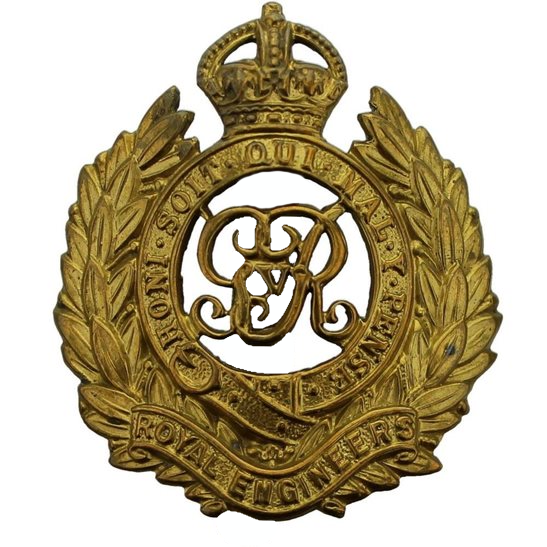Personal Details
Born: 20 October 1891
Family: The first child of William and Elizabeth Challenor of 28 Claypit Street, Whitchurch, Shropshire. Brother of Frank and George Challenor, both of whom died during the war. William married Ada Clawley in September 1923 and together we believe they had 8 children – Leslie R, Margaret J, Marjorie B, Frank, Robert, Dorothy J, Daisy J and Leonard D.
Other Names: Challenor
Civilian Occupation: He was employed by the General Post Office as a linesman.
Residence: At the time of the 1939 Register, William and Ada lived at 21 Wayland Road, Whitchurch, Shropshire.
Died: December 1963, aged 72.
Military Details
Regiment: Royal Engineers
Rank: Sapper
Service Number: 93790
Date of Enlistment: 22 May 1915
Date of Discharge: 12 March 1919
Reason for Discharge: Demobilisation
Other Information: He was gassed during the war.
William was awarded the Campaign Medals (British War Medal, and Victory Medal).

The British War Medal (also known as 'Squeak') was a silver or bronze medal awarded to officers and men of the British and Imperial Forces who either entered a theatre of war or entered service overseas between 5th August 1914 and 11th November 1918 inclusive. This was later extended to services in Russia, Siberia and some other areas in 1919 and 1920. Approximately 6.5 million British War Medals were issued. Approximately 6.4 million of these were the silver versions of this medal. Around 110,000 of a bronze version were issued mainly to Chinese, Maltese and Indian Labour Corps. The front (obv or obverse) of the medal depicts the head of George V. The recipient's service number, rank, name and unit was impressed on the rim.
The Allied Victory Medal (also known as 'Wilfred') was issued by each of the allies. It was decided that each of the allies should each issue their own bronze victory medal with a similar design, similar equivalent wording and identical ribbon. The British medal was designed by W. McMillan. The front depicts a winged classical figure representing victory. Approximately 5.7 million victory medals were issued. Interestingly, eligibility for this medal was more restrictive and not everyone who received the British War Medal ('Squeak') also received the Victory Medal ('Wilfred'). However, in general, all recipients of 'Wilfred' also received 'Squeak' and all recipients of The 1914 Star or The 1914/1915 Star (also known as 'Pip') also received both 'Squeak' and 'Wilfred'. The recipient's service number, rank, name and unit was impressed on the rim.

